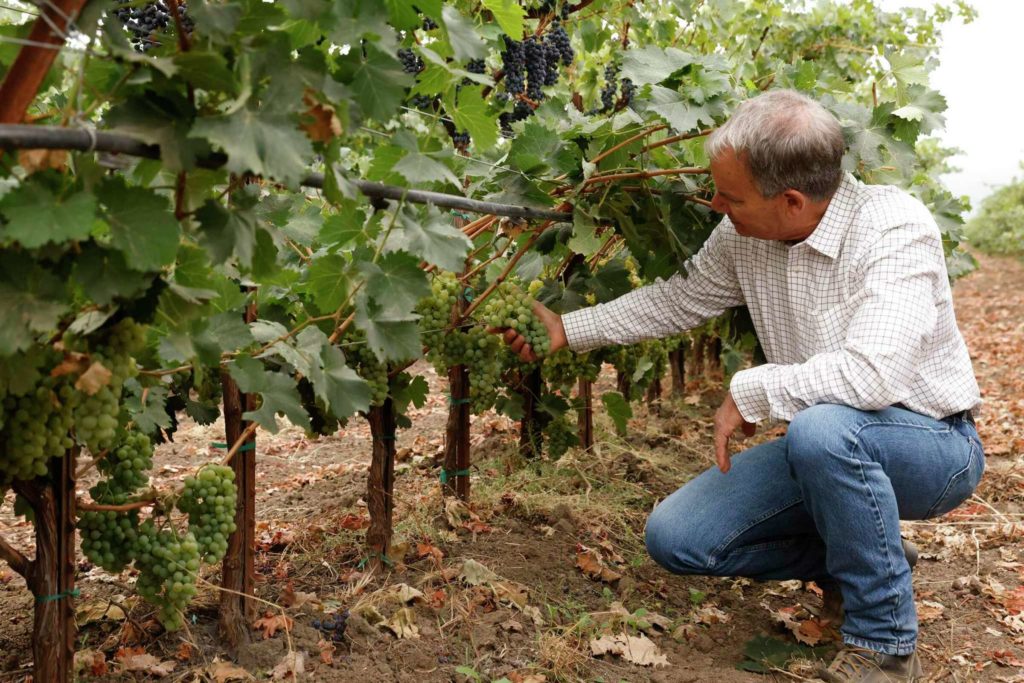This Napa vineyard looks totally bizarre. Here’s why it could help with climate change
Organic farmer Mark Neal believes his unusual ‘stacked’ farming technique may be necessary as temperatures rise
September 2, 2022 by Esther Mobley
Until you look closely, Mark Neal’s vineyard looks more or less like any other in Rutherford, the prestigious growing region in the geographic center of Napa Valley.
But walk into a row of his vines, which are shrouded in lush, green canopies this time of year, and it starts to look stranger. Where there should be one grapevine, there are two: a succession of red grape clusters hanging over a tier of white ones.
This unorthodox trellis system is a stay against climate change, said Neal. Rutherford is hot and getting hotter, a situation that Neal finds difficult for growing high-quality white grapes, which are more susceptible to sunburn than their red counterparts. But he didn’t want to give up growing white grapes altogether. So he decided to create “natural umbrellas,” as he put it, by letting the red grapevines and their leaves act as a protective shield.
It’s the latest example of a Napa Valley vintner making a major farming shift in response to climate change, which threatens to alter the way grapes grow and the way wines taste throughout the world in the coming decades. In Napa, a county whose agricultural production was worth $746 million last year, the stakes are especially high, and the push to adapt to a warmer future can sometimes seem at odds with business realities here. Calls to replace the valley’s signature wine, Cabernet Sauvignon, for example, with hotter-climate — but commercially unpopular — grapes like Alicante Bouschet and Touriga Nacional are often met with incredulity.
Neal’s approach is “definitely something new for Napa,” said S. Kaan Kurtural, viticulture specialist at UC Davis. (According to Kurtural, there are vineyards in Chile that use a similar type of stacked trellis.) And as temperatures rise, people may be looking for something new. Other grape growers have lately been showing up unannounced at Neal’s vineyard, Neal said, hoping to get a glimpse.

PHOTO CREDIT: Jessica Christian/The Chronicle

Mark Neal is considered the most prominent organic and biodynamic farmer in Napa Valley and currently farms the most significant certified organic acreage, 841 acres, as the owner of both Jack Neal and Son Vineyard Management (JNS) and Neal Family Vineyards.
Additionally, he’s consulting with a notable wine management group on the transition of 450 conventionally farmed acres to certified organic. Over the years, Mark has collected generational knowledge working alongside his father, developed tools for precise farming and viticulture needs, and invented technological tools that result in the most elegant and complex wines. Mark has worked in the wine business since 1966, and during that time, he’s assembled passionate teams at both JNS and Neal Family Vineyards that now include four of his children. Mark is the true definition of a vigneron.
